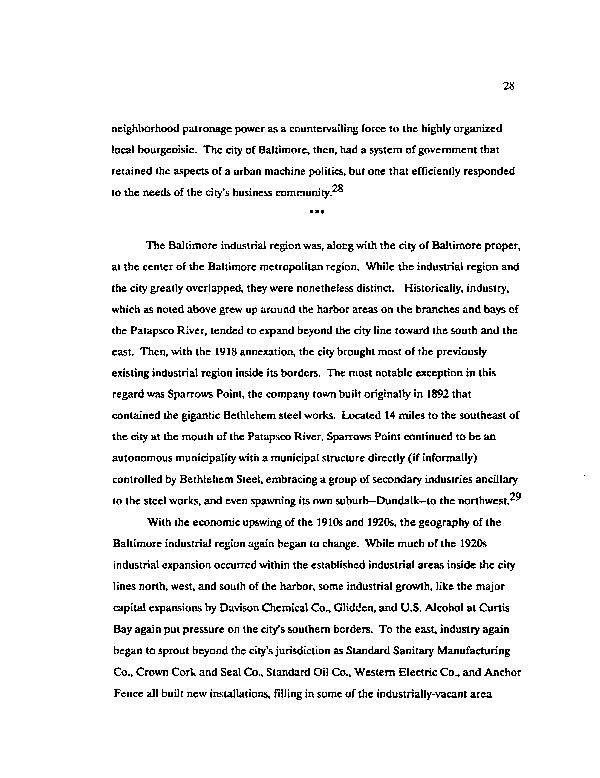|
28
neighborhood patronage power as a countervailing force to the highly organized
local bourgeoisie. The city of Baltimore, then, had a system of government that
retained the aspects of a urban machine politics, but one that efficiently responded
to the needs of the city's business community.^
The Baltimore industrial region was, along with the city of Baltimore proper,
at the center of the Baltimore metropolitan region. While the industrial region and
the city greatly overlapped, they were nonetheless distinct. Historically, industry,
which as noted above grew up around the harbor areas on the branches and bays cf
the Patapsco River, tended to expand beyond the city line toward the south and the
east. Then, with the 1918 annexation, the city brought most of the previously
existing industrial region inside its borders. The most notable exception in this
regard was Sparrows Point, the company town built originally in 1892 that
contained the gigantic Bethlehem steel works. Located 14 miles to the southeast of
the city at the mouth of the Patapsco River, Sparrows Point continued to be an
autonomous municipality with a municipal structure directly (if informally)
controlled by Bethlehem Steel, embracing a group of secondary industries ancillary
to the steel works, and even spawning its own suburb-Dundalk-to the northwest.
With the economic upswing of the 1910s and 1920s, the geography of the
Baltimore industrial region again began to change. While much of the 1920s
industrial expansion occurred within the established industrial areas inside the city
lines north, west, and south of the harbor, some industrial growth, like the major
capital expansions by Davison Chemical Co., Glidden, and U.S. Alcohol at Curtis
Bay again put pressure on the city's southern borders. To the east, industry again
began to sprout beyond the city's jurisdiction as Standard Sanitary Manufacturing
Co., Crown Cork and Seal Co., Standard Oil Co., Western Electric Co., and Anchor
Fence all built new installations, filling in some of the industrially-vacant area
|

